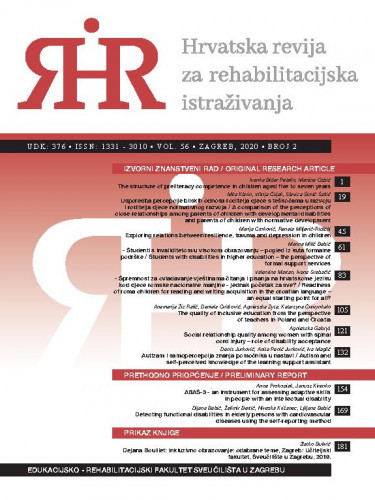Defining psychological resilience is a challenge for researchers and mental health professionals. More recent understandings of resilience define it as the capacity of a dynamic system to successfully adapt to disruptive factors that threaten the sustainability or development of that system. The present study aimed to examine the relationships between psychological trauma, depression and certain factors of resilience in a clinical sample of children (N = 103). To test the hypotheses, the following measuring instruments were used: the Trauma Symptom Checklist (TSCC), Beck Youth Inventories - Second Edition, Child and Youth Resilience Measure (CYRM-28), as well as assessment of psychotraumatization. The results were not quite consistent with previous studies of resilience, so that the hypothesis that abused, non-traumatised children would have significantly higher scores on the resilience measure than abused children was not confirmed. The results do suggest that abuse is more likely to occur among children whose caregivers do not provide care for their physical and psychological needs. It has also been confirmed that caregivers’ neglect of psychological needs is related to more significant negative psychological outcomes than caregivers’ neglect of physical needs. Additionally, the study found a greater negative correlation between resilience and depression in traumatised children than in non-traumatised children.; Definiranje psihološke otpornosti predstavlja izazov za istraživače i stručnjake za mentalno zdravlje. Novija shvaćanja otpornosti definiraju istu kao kapacitet dinamičnog sustava da se uspješno prilagodi na ometajuće čimbenike koji prijete održivosti ili razvoju tog sustava. Ovo istraživanje imalo je za cilj ispitati odnos psihičke traume, depresivnosti i čimbenika otpornosti na kliničkom uzorku djece (N=103). Kako bi se provjerile početne pretpostavke, od mjernih instrumenata korišteni su Ljestvica simptoma traume kod djece (TSCC), Beckovi inventari za mlade – drugo izdanje za djecu i adolescente (BYI-II), Skala procjene otpornosti za djecu i adolescente (CYRM-28) te procjena psihotraumatizacije. Dobiveni rezultati su pokazali kako je pojava zlostavljanja vjerojatnija kod djece čiji skrbnici ne brinu o njihovim fizičkim i psihološkim potrebama. Potvrđeno je kako je nebriga skrbnika o psihološkim potrebama djeteta povezana sa značajnijim negativnim psihološkim ishodima od nebrige skrbnika o fizičkim potrebama. Dodatno, istraživanjem je dobivena veća negativna povezanost otpornosti i depresivnosti kod djece koja su traumatizirana, nego kod netraumatizirane djece. Nadalje, rezultati nisu sasvim u skladu s prijašnjim istraživanjima otpornosti, naime hipoteza da će zlostavljana djeca koja nemaju traumatske reakcije imati značajno više rezultate na upitniku otpornosti od zlostavljanih s izraženim traumatskim reakcijama nije potvrđena te potiče na daljnji nastavak istraživanja.
Sažetak

 Hrvatska revija za rehabilitacijska istraživanja : 56, 2(2020) / urednica, editor Jelena Kuvač Kraljević
Hrvatska revija za rehabilitacijska istraživanja : 56, 2(2020) / urednica, editor Jelena Kuvač Kraljević